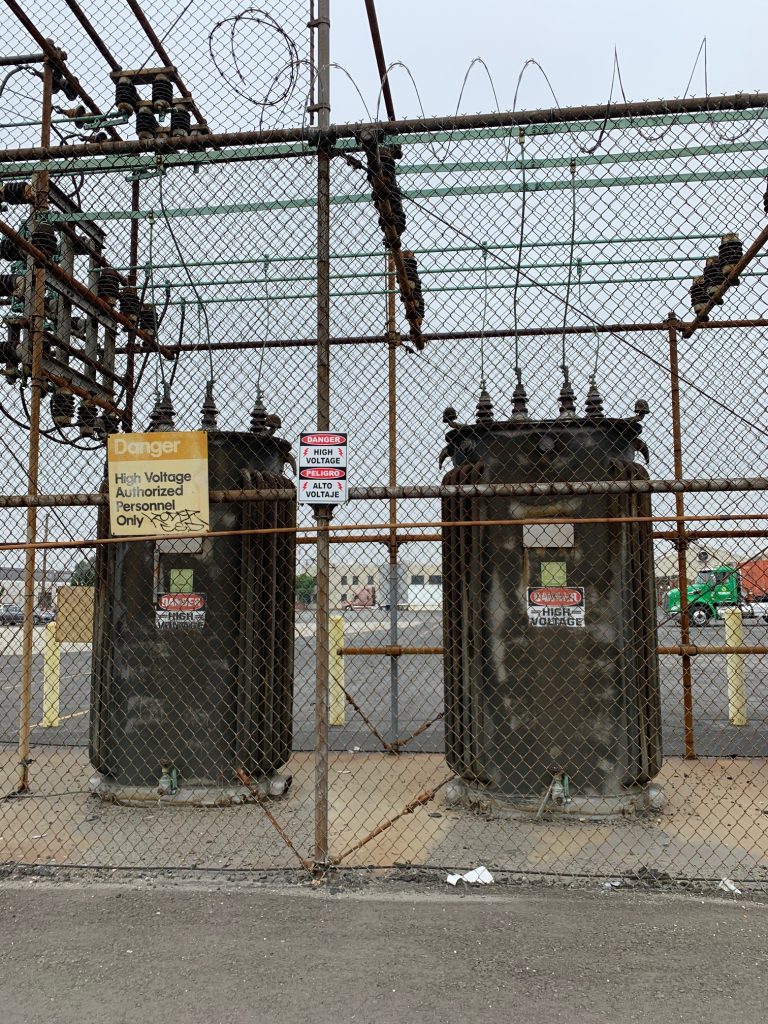
Circuit Breakers Keep Tripping
A circuit breaker is an automatic switch that is used to protect your home and your home’s electrical devices when too much electricity flows through a circuit. This switch can also be manually controlled. Circuit breakers are located inside your circuit breaker panel. This panel is often located in one’s garage but can also be in a closet, bedroom, on an exterior wall and other places. You should always know where your panel is located, and every switch should be properly labeled.
Now is a great time to locate your panel. Open it up, see if all the switches are properly labeled. If they are not, and you aren’t qualified to do it yourself, give us a call.
Electricity pushes into our residential homes over two lines of 120 Volts and a shared ground. The circuit breaker panel is where the electricity comes in before it gets distributed to all the outlets and switches in your home. That’s why most of your devices, rated at 120 volts, can plug into a wall receptacle with no problem. Keep in mind, voltage fluctuates slightly because our grid is over 100 years old. Many of the components that make up the grid are often older than you!

Next in line are your electrical appliances. We are speaking about lights, music, Wi-Fi, air conditioning, televisions, and everything else that plugs into a wall outlet. These all have an amperage rating. Where voltage can be thought of as pushing electricity, amperage can be thought of as the draw or “energy sucking” rating of the device. They are not opposites. Too much voltage will kill a device. Too little voltage and the device won’t power up (and can damage it). If the voltage of your outlet and your device are the same (usually 120 volts) then you look at the amperage rating. Most home outlets are rated to 15 amps. You will know if it is 15, 20 or something else by the rating shown on that circuit’s circuit breaker. If the maximum amperage rating of all your devices plugged into that circuit add up to less than the rating on your circuit breaker than you’re probably OK. We say “maximum amperage rating” because most devices fluctuate in the way they draw amperage (power). If the sum of all the device’s amperage goes above the rating on the circuit breaker, even for a split-second, then the breaker will trip in order to prevent wires from overheating, damaging electronics and possibly causing a fire. Usually the load is too great because too much is plugged in but there are many other reasons as shown below. Without circuit breakers, house fires would be quite common.

When a circuit breaker trips, then you must go to the breaker box, locate, and flip the “tripped switch” in the panel to get the power back on again.

Although tripping of circuit breakers ensures safety, it is not fun experiencing them and getting the power back on is always an inconvenience. Nowadays, one can reset smart circuit breakers via smartphone.
Knowing the reason behind the constant tripping, allows one to do something about it. Here are the three main reasons circuit breakers trip.
Three Reasons Why Circuit Breakers Keep Tripping
Circuit Overloads
A circuit overload is one of the main reasons why circuit breakers trip constantly. This occurs when you want a particular circuit to provide more electricity than its actual capacity. This will lead to the overheating of the circuit which puts all the electrical appliances connected to the circuit at risk.
For example, if your entertainment system draws 20 amps but is connected to the circuit which supplies only 15 amps then the circuit (wires, outlet, switch, etc) of the entertainment system will overheat and possibly melt because it’s drawing too much electricity (power). The circuit breaker trips to prevent this from happening, potentially preventing a major fire.

You must fix this issue by redistributing the electrical load across different circuits. Devices that are completely off do not draw an electrical load from the circuit breaker.
Short Circuits
Another common reason why circuit breakers trip is a short circuit, which is more dangerous than an overloaded circuit. A short circuit is caused when a “hot” wire comes into contact with a “neutral wire” in one of your electrical outlets. Whenever this happens, a large amount of current will flow through the circuit, creating more heat than what the circuit can handle. When this happens the breaker will trip, shutting off the circuit to prevent dangerous events such as a fire.
Short circuits occur for many reasons such as faulty wiring or loose connections. Short circuit are often accompanied by a burning smell around the breaker or circuit.
Ground Fault Surges
Ground fault surges are similar to short circuits. They occur when a hot wire touches a ground wire that is made of bare copper or the side of a metal outlet box which is connected to the ground wire. This will cause more electricity to pass through it which the circuit cannot handle. The breaker trips in order to protect the circuit and appliances from overheating or from potential fires.

Do not avoid or overlook any electrical problems, doing so puts the safety of your home and loved ones at risk. If you experience tripping of the circuit breakers frequently, call in C-10 licensed professionals to investigate the problem.





The explanation of the power feed into a home is not correct. Three conductors enter a house panel two carry 120 volts each and the third is common.